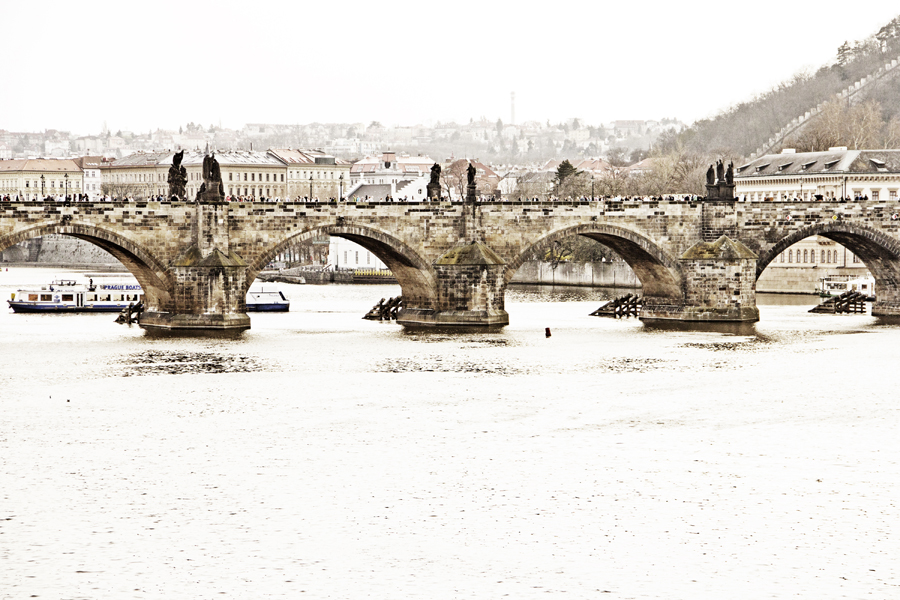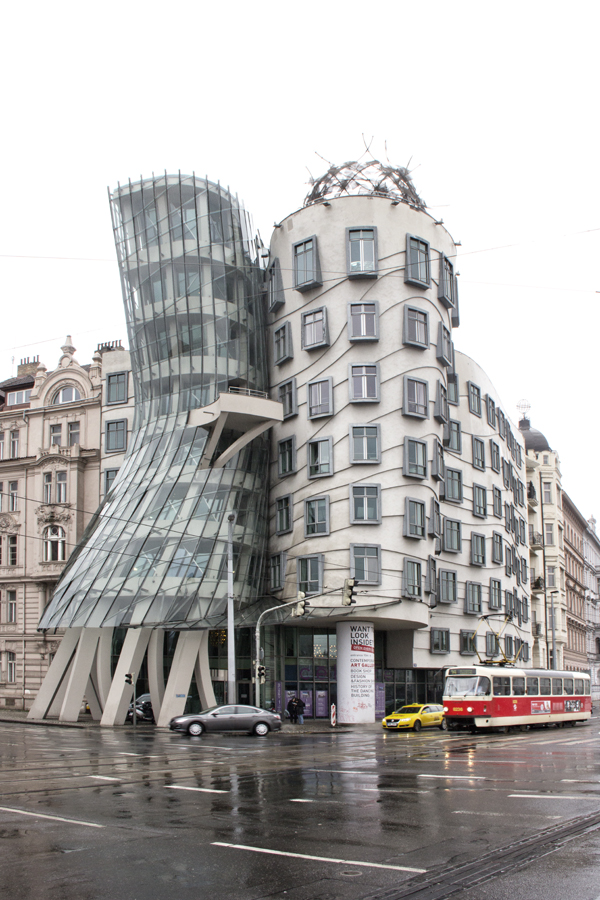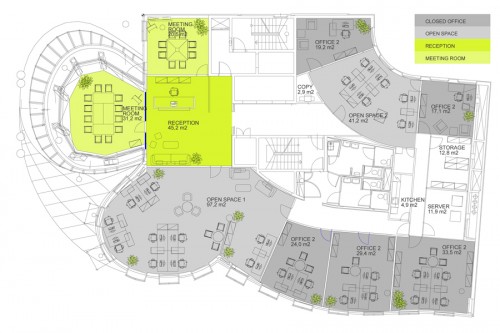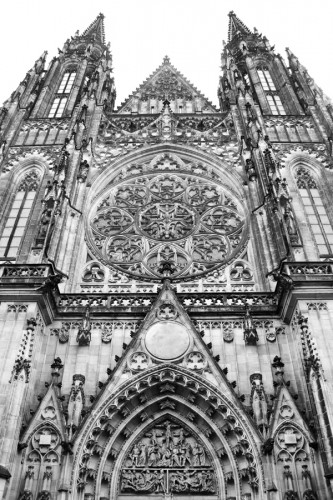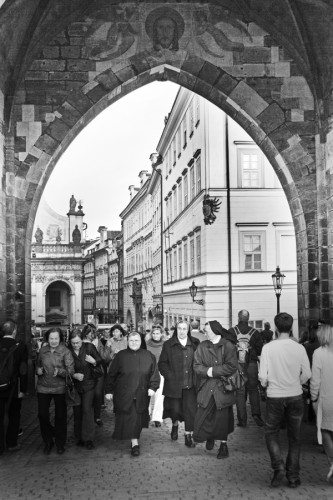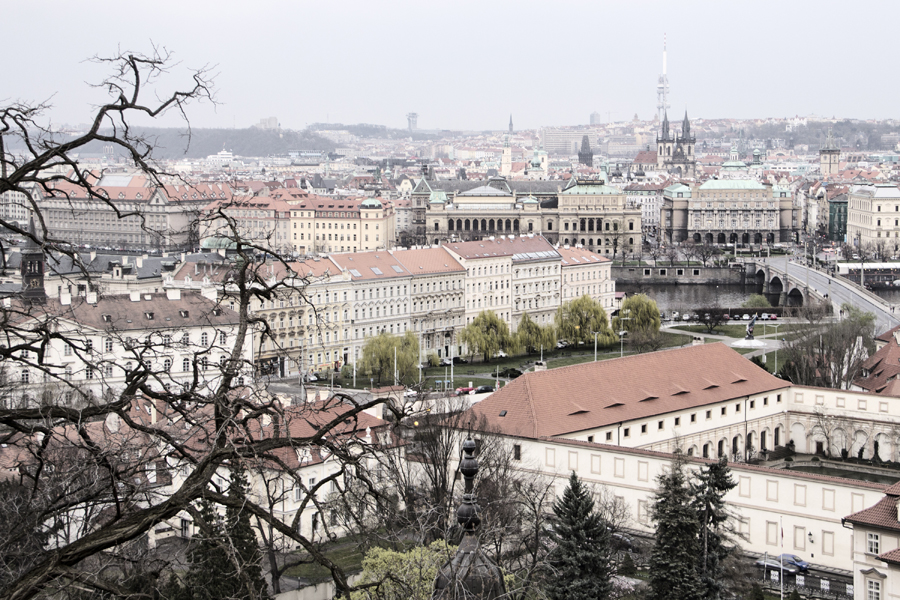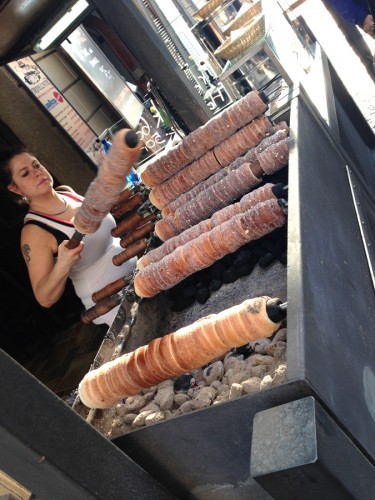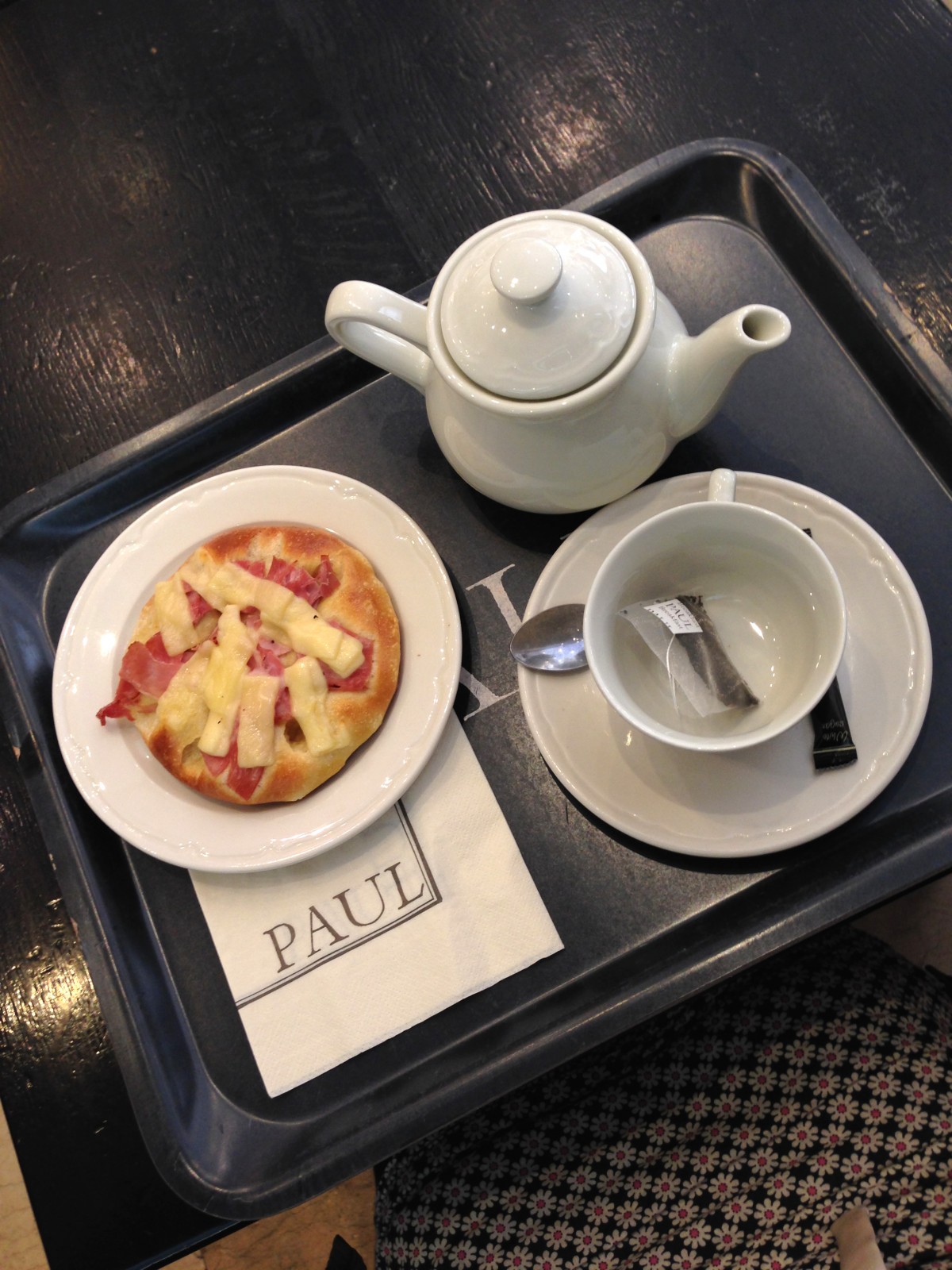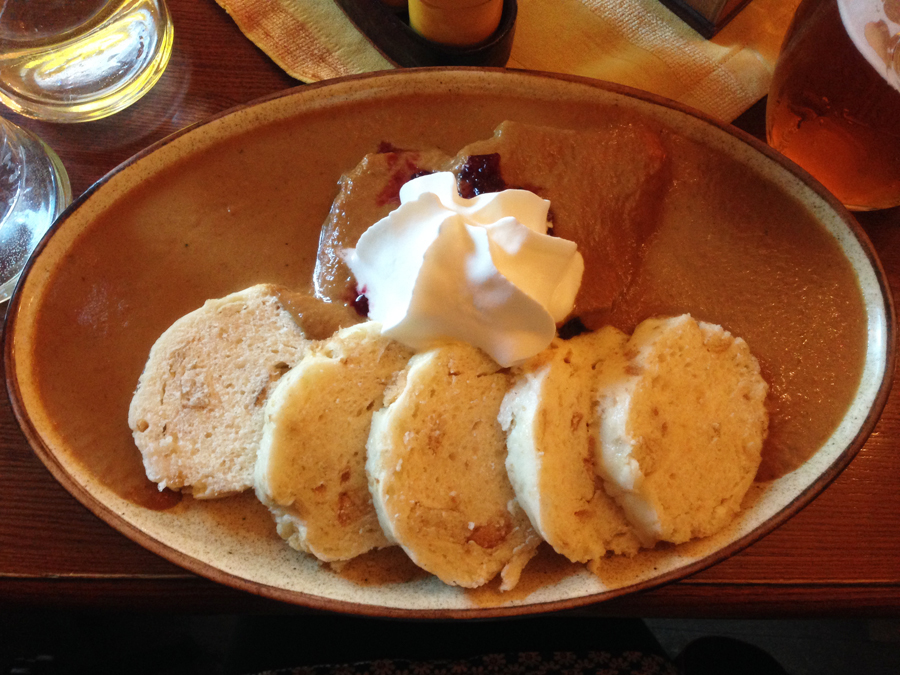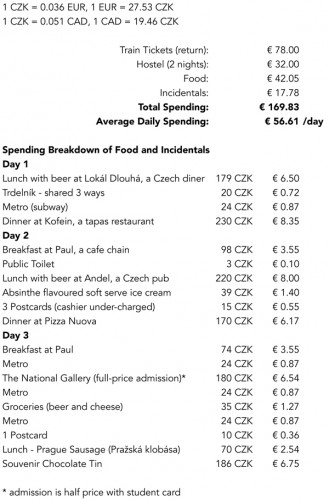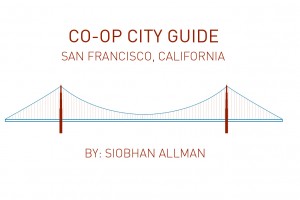During my time in Berlin, I traveled nearby cities outside of and within Germany on a budget of 50-60 euros per day including air/ground transportation, accommodation, food and other incidentals. Cities included Prague, Stockholm, Copenhagen, London, Szczecin in Poland and Leipzig, Dresden and Munich within Germany. The following is the first of a series of six posts detailing my activities and how my money was spent. General highlights to my travels include art and architecture, city sights, and food.
Prague
Toward the end of March, I traveled to Prague with two co-workers. Keeping to a tight budget in Eastern Europe was not a challenge. The only hurdle was having a foodie in the group. Almost every meal, including breakfast which I normally skip, was at a relatively nice restaurant. My usual habit would have been to stock up on bread and cheese for my urban hikes. But perhaps the time spent searching for these unique local restaurants likely offset the time and money I would have spent on shopping.
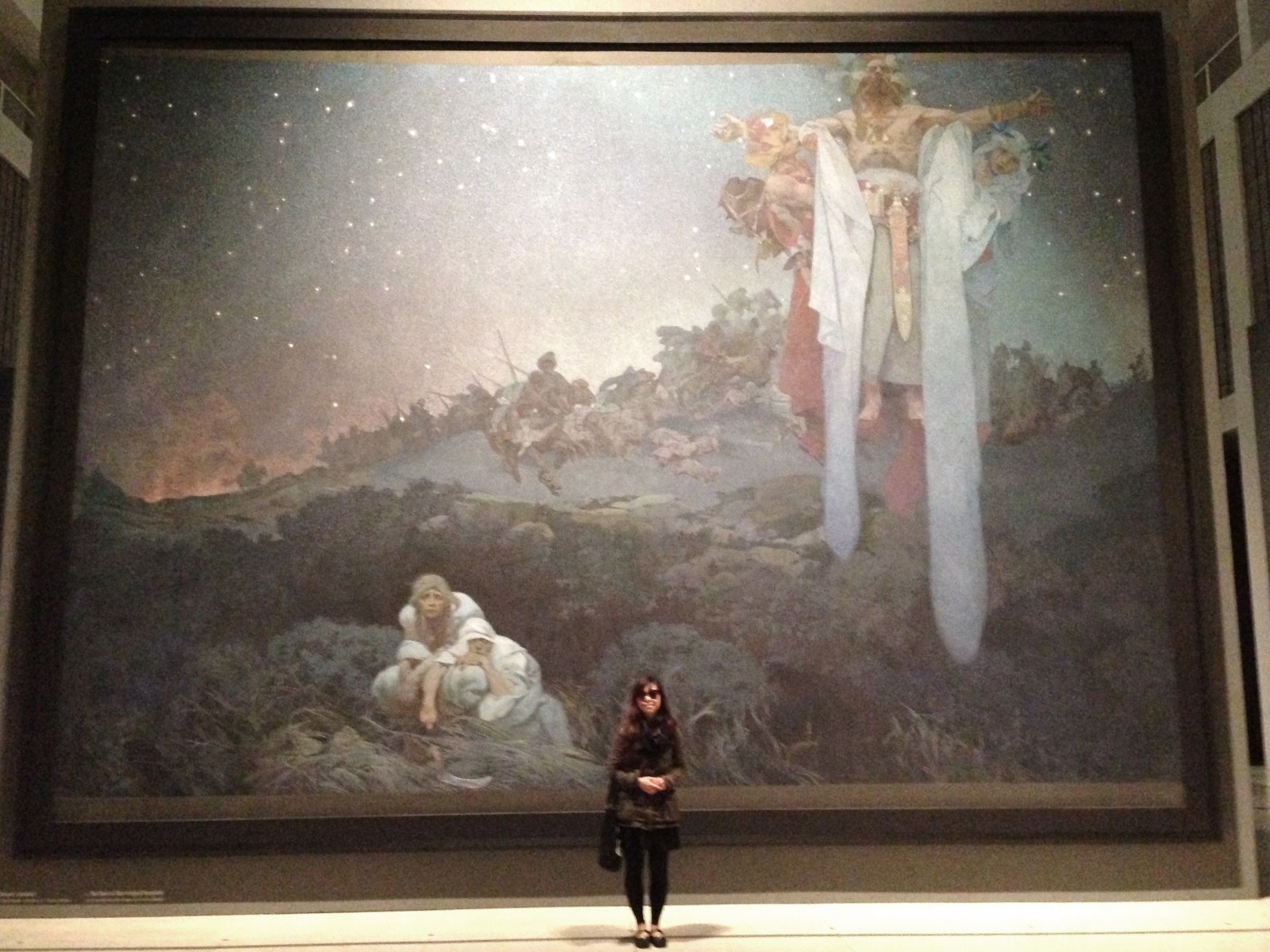
History of Czech and Slavic nations in twenty large paintings by Alfons Mucha. Exhibit on at the National Gallery from May 10, 2012 until Dec. 31, 2015
My other coworker is a huge fan of Alphonse Mucha, a Czech Art Nouveau painter who’s decorative art is still printed on covers of notebooks and journals. We ended up staying at Fusion Hostel next to the Mucha Museum, which we would have visited. But after having a gourmet Tapas dinner with a local friend, we were made aware that The Slav Epic series is currently exhibited at the National Gallery.
The Slav Epic (Slovanská epopej) is a series of twenty massive paintings depicting the history of the Czech and the Slavic people and is considered Mucha’s greatest masterpiece. Mucha’s display of Slavic nationalism was branded as ‘reactionary’ during the rise of fascism, resulting in his arrest by the Gestapo and his eventual death in 1939. The scale of these paintings is truly magnificent. At the back of the exhibition hall, I was intrigued by a video that documents the transport and curation process of these great works.
The Charles Bridge is a wide stone structure that had been the only means of crossing the Vltava river until 1841. Historically, this bridge elevated Prague to prominence on the trade route between Eastern to Western Europe. Today it is still a busy pedestrian thoroughfare, populated with street vendors, and provides a connection between Prague Castle and the city’s Old Town.
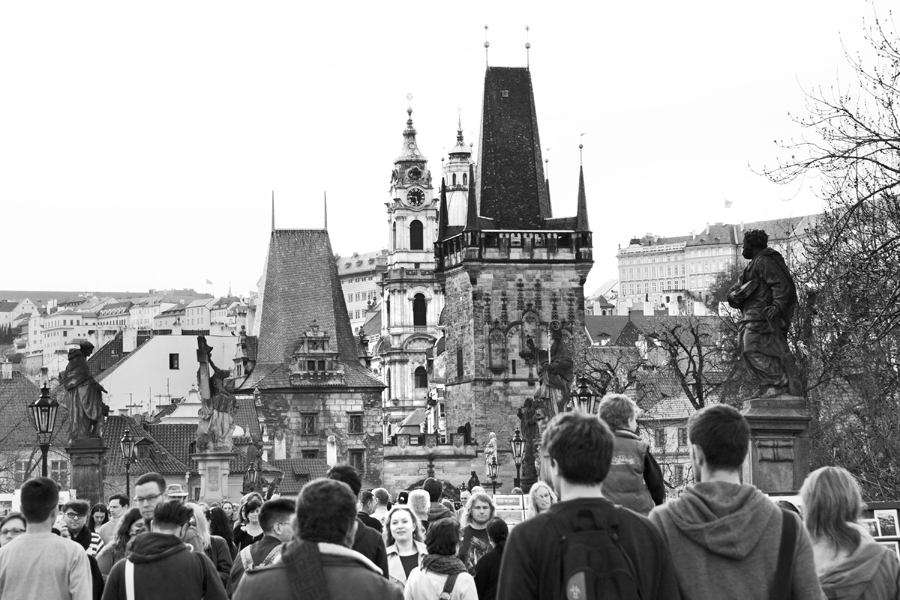
Walking on Charles Bridge
Prague Castle, the official residence and office of the President of the Czech Republic with an area of almost 70 000 m2 and dating back to the ninth century, is the largest ancient castle in the world. It consists of a many buildings representing a variety of architectural styles including the Gothic St. Vitus Cathedral, the Romanesque Basilica of St. George, a monastery, several gardens and defense towers. You can roam around the exterior of the buildings in the complex free of charge.
Petřín Hill is 327m high, rising some 130 m above the left bank of the Vltava River with an Eiffel Tower-like structure that sits on its peak. It offers great panoramic views and is a popular spot for locals taking a leisurely stroll in the middle of the city. Franz Kafka, born and raised in Prague, referenced the hill in an early short story entitled “Description of a Struggle”. During late March, the trees in the parks that cover Petřín Hill were in full bloom.
Food
Trdelník is a traditional Hungarian cake and sweet pastry, originally from Transylvania. It is found within the Slovakian, Czech and Austrian cuisine and is particular popular among tourists. Street vendors grilling rolled dough wrapped around a stick and sprinkling it with sugar and walnut mix certainly generates a lot of interest. We ended up buying one and splitting it three ways. I would describe it as bread-like with a crusty exterior and soft centre that’s warm and scrumptious right off the grill.
My coworkers and I all have an affinity for the UK and were surprised at how many British chains were in Prague including Tesco and Marks & Spencer. Berlin is situated quite far into the eastern front of Western Europe so it is not so cheap to get to London, whereas an occasional trip to Prague to enjoy British comforts is much more feasible.
One of our meals was at a local pub called Andel. I had a traditional dish of Svíčková (beef tenderloin in a cream sauce) with houskové knedlíky (bread dumplings). At the end of the meal, our server pointed out that we pay a prescribed tip on the final amount. We did but I later found out that it is illegal for restaurants to enforce a service charge.


